Do you love chiles? A warm bowl of chili – meat, turkey or even vegan? Wondering how these ingredients and foods can fit into your low FODMAP lifestyle? This article, All About Chile, Chili & Chilli, takes you through it all, step-by-step.
This article was updated in September 2022 after Monash University added several chile products to their lab tested foods on their smartphone app. Please note that both Monash University & FODMAP Friendly have lab tested peppers and chiles and their results do not always match. Additionally, foods are occasionally re-tested only to show different results from prior tests. All of these lab tests are accurate. To understand more, please read our articles, Monash University Lab Testing Explained and FODMAP Friendly Lab Testing Explained and also our article on When Monash University and FODMAP Friendly Low FODMAP Lab Test Results Differ.
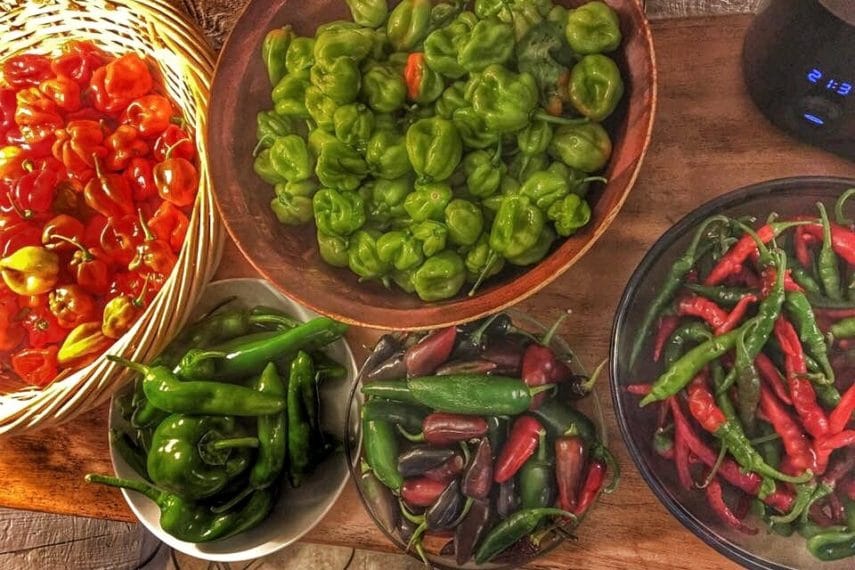
Amy Laura is a chile expert and follows the low FODMAP diet and she consulted on this article. If you are a chile fan, you must check out her work with chiles at FODifyit.com. She has also written a Monash University Low FODMAP Certified southwestern inspired cookbook.
Is It Chile, Chili Or Chilli?
You might see various spellings for capsicum and peppers – and dishes that feature them – and wonder what they refer to? Some of this is due to differences in spelling from country to country, but some of this is also due to inappropriate use of attaching certain spellings to certain ingredients or finished dishes. We will clear that up as well!
For our purposes, being based in the U.S., we use the spelling “chile(s)” when we are talking about an actual pepper, and “chili” when we are referring to “chili powder” or the finished meat, poultry, vegetable, tempeh or bean-based dish, such as our All Beef Chili, below.
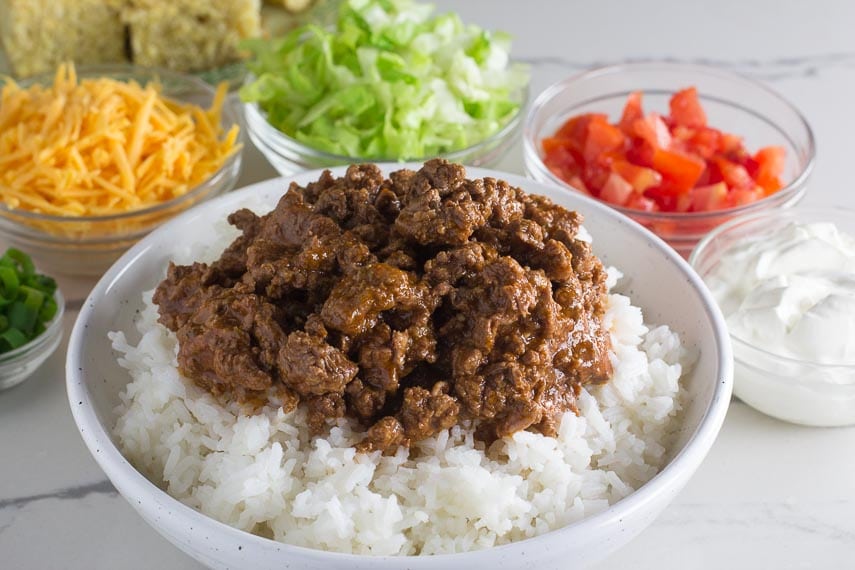
Monash University uses the spelling “chilli” on their app when they are referring to raw peppers, dried peppers and also ground powders. FODMAP Friendly uses this spelling as well.
The term “Capsicum” refers to the genus of flowering plants in the nightshade family Solanaceae, native to the Americas and cultivated worldwide. You will rarely find this term used to describe peppers in the U.S. but Monash and FODMAP Friendly use the term in their app. When using the apps you might want to try searching for all of these terms to find what you are looking for. Thankfully they have both recently also added the terms “bell pepper” to make the apps more user-friendly for those in other parts of the world.
Thousands Of Chiles
There are about 4,000 varieties of chiles in the world, each with a unique flavor, color, texture and heat level. Chiles are not all hot and spicy! Their heat level is measured in Scoville units, which is depicted below. The Sweet Bells” at the bottom are our typical supermarket bell peppers.
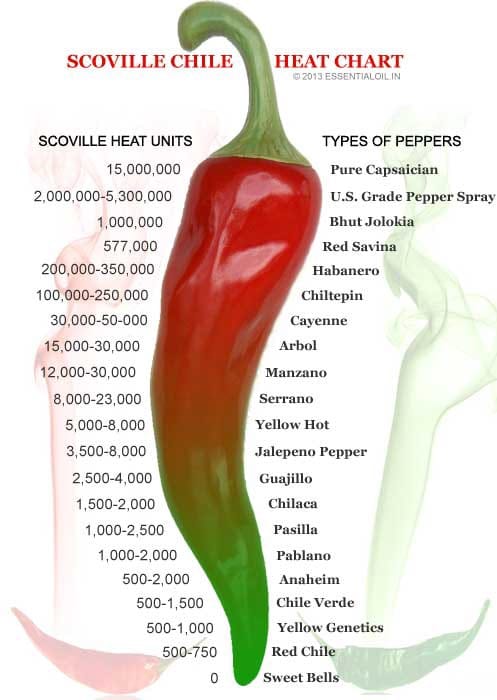
About Chile, Spicy Food, IBS & Digestion
Hot and spicy foods, including those seasoned with chiles, can be tolerated by some people with IBS, yet for others they can be a digestive issue. Capsaicin is what gives chiles their “heat” and spiciness and can trigger heartburn and digestive upset. If you have GERD, spicy foods might be best avoided.
Your tolerance can only be determined by you, as everyone will have unique reactions. Perhaps this will be discovered during a structured Challenge Phase, or maybe you have always had issues with spicy food. Know your tolerances. Just because a chile is determined to be low FODMAP does not guarantee that you will not have digestive upset.
Help! My Mouth Is On Fire!
BTW we used to run a chili festival and one of the highlights was the hot pepper eating contest. It was unreal how many raw jalapeños these contestants could eat in 2 minutes! I think the record one year was 17 – and the person was this tiny woman, maybe 90 pounds light. Here is a tip: if you are eating something spicy, and you realize that it is too spicy – as in your mouth is on fire – what do you do? Do Not Drink Water! The capsaicin is oil based and water, or water-based liquids, like beer, won’t work
Drink milk! Milk contains a protein called casein, which breaks down the capsaicin — just like how dish soap can cut through grease. Alt milks won’t work. There is also some anecdotal evidence that very sweet beverages, high in sucrose content, like Kool-Aid, might work. Even just rinsing out your mouth or gargling can help.
Seeds Or No Seeds
A lot of “heat” is contained within the seeds and white interior ribs of chile peppers. You can remove them, and some recipes will indicate that this is preferable. Take care not to touch your eyes, lips or any mucous membranes, like around your nose, as the oils from the peppers can be extremely irritating. Wash hands well with hot soapy water, or even consider using gloves.
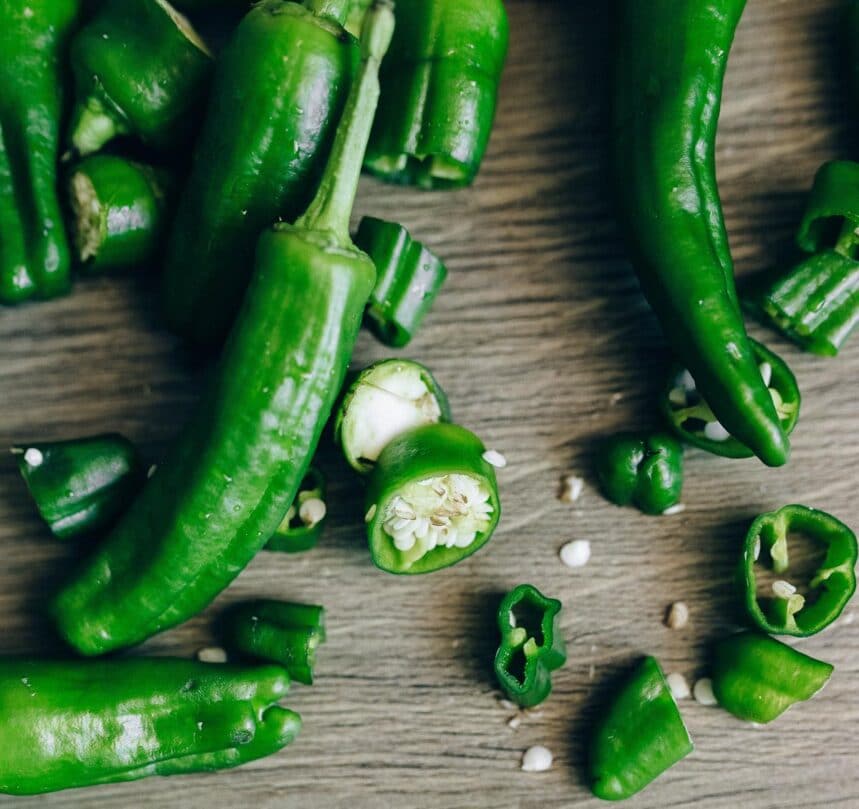
Raw vs. Cooked
Also note that anecdotally some folks find they can digest peppers better when cooked, rather than raw. This is not a FODMAP issue, but something to consider.
Chiles Lab Tested For FODMAPs
We know from experience that we cannot make extrapolations about FODMAP levels of produce (or any food) just by looking at it. One pepper does not equal another when it comes to FODMAPs. Luckily both Monash University and FODMAP Friendly have lab tested several fresh and dried chiles, chile products as well as hot sauces, which we detail below.
If you want to try a chile that has not been lab tested, treat it as an untested food. Review our recommendations in What If A Food Has Not Been Lab Tested.
f you want to try a chile that has not been lab tested, treat it as an untested food. Review our recommendations in What If A Food Has Not Been Lab Tested.
We will first go through the peppers that are clearly labeled in the smartphone apps by type (such as raw jalapeño or ground chipotle) and then will address the chiles that Monash and FODMAP Friendly have not been very specific about.
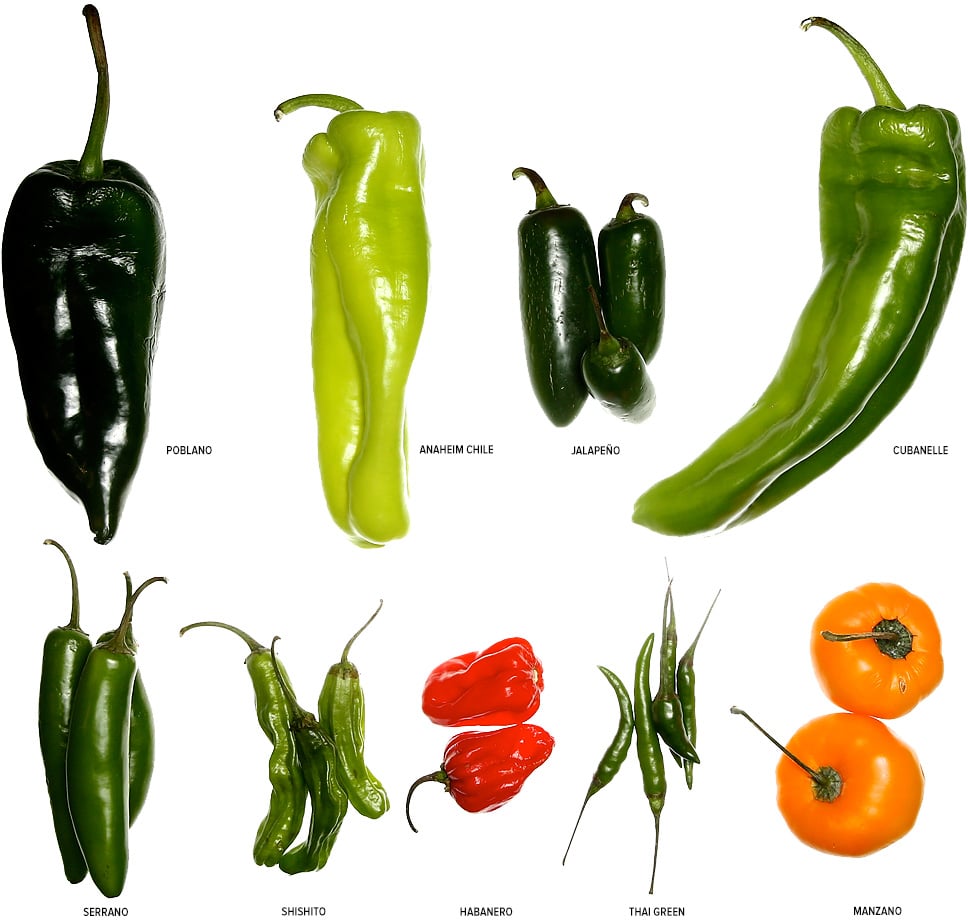
Green Bell Peppers
Monash University lists these as both “Capsicum, green, raw”, as well as “Bell pepper, green, raw”. They are the same thing. These are considered sweet, as opposed to hot/spicy, peppers.
Initial lab tests by Monash University stated that green bell peppers were low FODMAP in amounts of 52 g or about ½ cup. Subsequent lab tests by Monash showed low FODMAP servings of ½ cup listed as 75 g. As always we suggest you go by weight. (How small were the peppers chopped? Who knows. Obviously differently, as the weight is the same).
FODMAP Friendly has lab tested green peppers, too, which they call “Green Capsicum (Bell Pepper)”. Their low FODMAP serving size is 75 g and they make a point of saying that a maximum serving size is 750 g (26.50 ounces). This is a very generous serving.
How is it that you can have 10 times the initial serving size amount? Many folks do not realize that the serving sizes in the apps are based on typical serving sizes and those laid out by Australian Healthy Eating Guidelines, and not just determined by FODMAP content. Please review our article, What Is A Low FODMAP Serving Size?
Red Bell Peppers
Monash University lists these as both “Capsicum, red, raw”, as well as “Bell pepper, red, raw”. They are the same thing and considered to be sweet, as opposed to hot/spicy, peppers.
Initial lab tests by Monash University stated that they showed no detectable FODMAPs. Subsequent lab tests by Monash showed low FODMAP servings of ⅓ cup listed as 43 g. No need to fret, though. Monash University still sells their FODMAP booklet to the public, and to dietitians, that shows red bell peppers as containing no FODMAPs. This is because it is possible for that to be the case. We just don’t know the actual lab value status of the ones you might buy.
FODMAP Friendly has lab tested red peppers, too, which they call “Red Capsicum (Bell Pepper)”. Their low FODMAP serving size is 75 g and they make a point of saying that a maximum serving size is 750 g (26.50 ounces). See info above under Green Bell Peppers on how it is possible that we can have this amount and remain low FODMAP.
Isn’t A Red BellPepper Just A Ripe Green Bell Pepper?
Some varieties of red bell peppers are ripened green bell peppers. Ripening is known to affect FODMAPs. You can read more in our article, How Dehydration, Ripening and Storage Affect Fruit.
However, there are green bell peppers, as well as yellow, orange and red bell peppers, that are particular varieties that are their own thing, and not simply green peppers that have ripened to a certain degree.
One thing to note is that we do not know what kind(s) of red peppers were lab tested – or green, yellow or orange, for instance. This is very important to note, as varieties can, and most likely do, vary in FODMAP content. Please review our articles on lab testing from Monash and FODMAP Friendly.
Yellow Bell Peppers
Both Monash University and FODMAP Friendly have lab tested yellow bell peppers.
FODMAP Friendly has lab tested yellow peppers, which they call “Yellow Capsicum (Bell Pepper)”. Their low FODMAP serving size is 24 g. 100 g was tested and failed, with the peppers showing they contained 400% excess fructose at that serving size.
Monash University lab tests have set a low FODMAP serving size at 35 g, with them becoming Moderate for FODMAPs at 47 g and high FODMAP at 75g
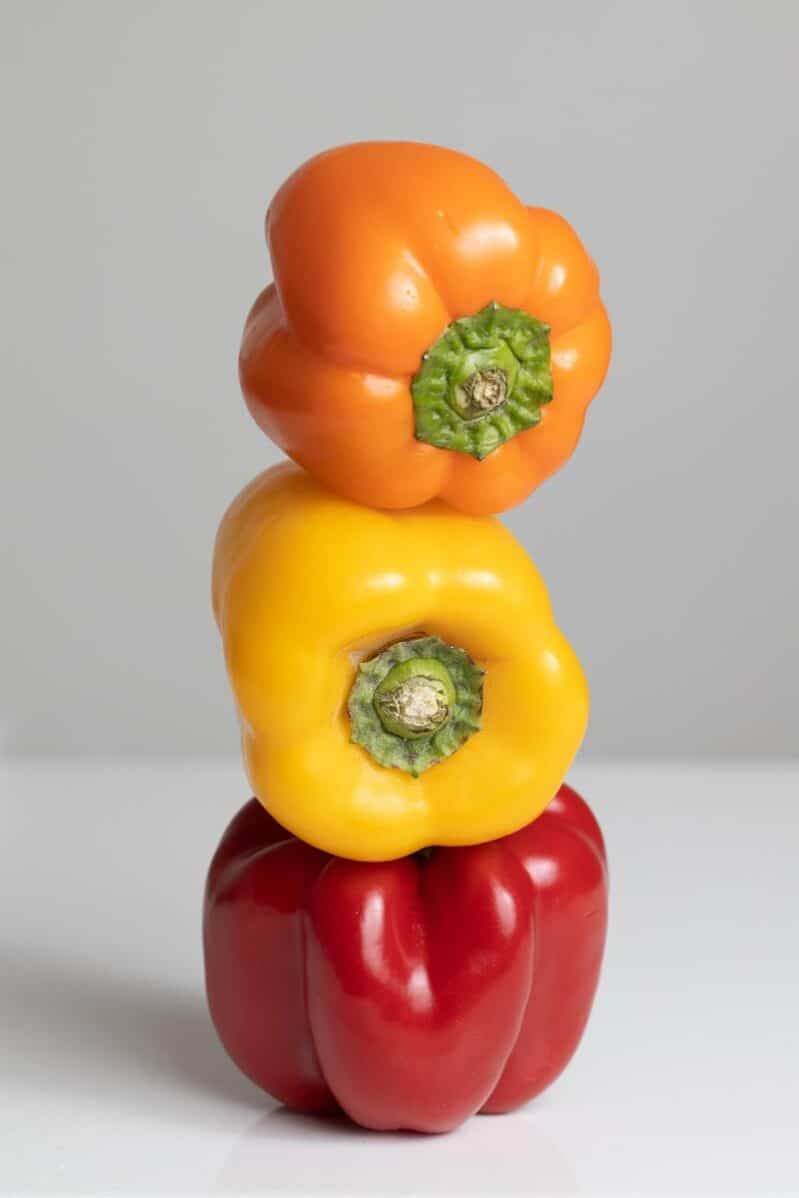
Orange Bell Peppers
As of September 2022 orange bell peppers have been lab tested by Monash University. They report a low FODMAP serving size at 38 g, with them becoming Moderate for FODMAPs at 51 g and high FODMAP at 75g.
Jalapeno: Fresh & Pickled
Monash University has lab tested both fresh and pickled jalapeños. Fresh are listed as “Chilli, Jalapeño, raw” and are low FODMAP in 29 g portions (a small chile). Pickled are low FODMAP in 1 Australian tablespoon, drained (15 g). Only trace amounts of FODMAPs were found in the pickled.
You can also find jalapeños in lab tested certified products such as Fody Salsa, available in both Mild and Medium heat.
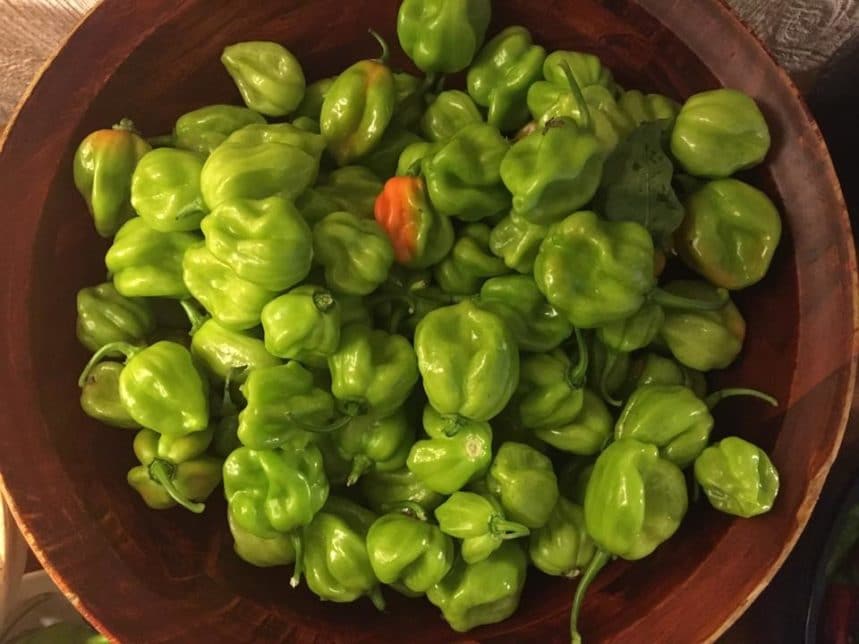
Green & Red Habanero
You might remember that green habaneros were listed in the Monash app (a while ago), but now that entry is gone. Monash had listed Green Habaneros as low FODMAP in amounts of 1 chile (9 g). The Green Habanero Sauce is low FODMAP in 8 g amounts (or about 1 teaspoon).
We asked Monash why they had tested green habaneros, and not ripe red and orange habaneros, which are more commonly used. We did not receive a clear answer to this. Now, with the 2022 update, they helpfully added ripe habaneros. Red habanero are low FODMAP in 11 g portions. Red Habanero Sauce is low FODMAP in amounts of 10 g (about 1 teaspoon).
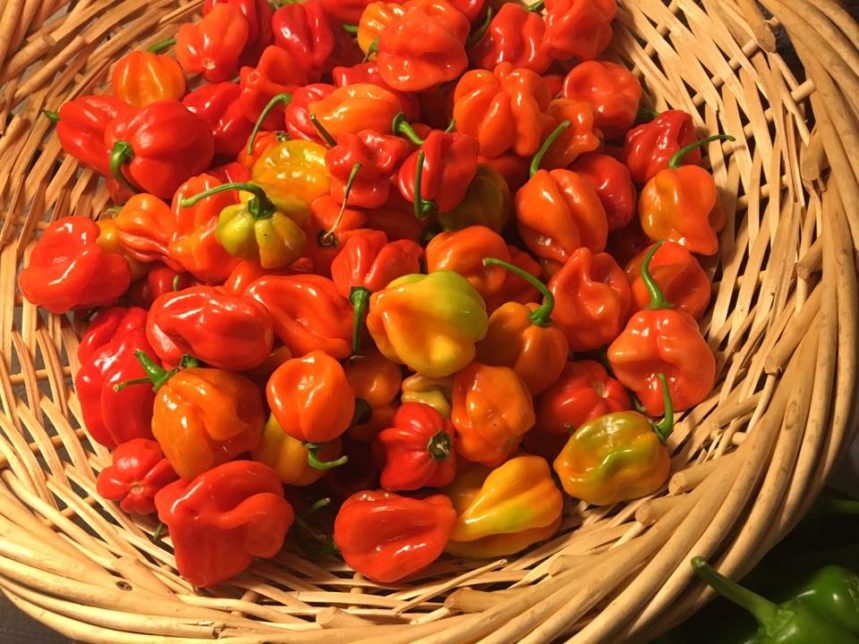
Poblano
Mild poblanos have now been lab tested! Let’s make chiles rellenos! Monash University has lab tested them and they are low FODMAP in 97 g portions, which is about 1 medium sized pepper. Please note, that as Amy Laura helpfully pointed out, the image that accompanies the poblanos on the Monash app is misleading. It depicts raw poblanos sliced like a bell pepper. The skins need to be roasted or steamed and removed before eating.
Ancho Chilli
Ancho chiles are dried poblano chile peppers. Green poblano peppers are unripened and have a low FODMAP serving size, as detailed above. To make anchos the peppers are allowed to ripen on the vine until they turn deep red in color and are then picked and dried. Unfortunately they have no low FODMAP serving size listed in the app. 1 average size chile, of 17 g, is high in fructose.
Chipotle: Whole & Ground
Monash University has lab tested both whole dried chipotle and ground chipotle. Whole dried chipotle peppers have no low FODMAP serving size according to Monash University lab testing. Ground chipotle have a low FODMAP serving size of 2 g, about 1 teaspoon. They become Moderate for FODMAPs at 3 g, so there is very little wiggle room.
If you love canned Chipotle in Adobo Sauce (which contains garlic), we have a low FODMAP version!
Gochugaru Korean Chilli Powder
Monash University has lab tested Gochugaru and is low FODMAP in 2 g portions, which is about 1 teaspoon (which is a lot).
Sriracha
Sriracha is a very popular hot pepper sauce that contains garlic. It does have a low FODMAP serving size that has been lab tested and confirmed by Monash University in 5 g portions, which is about 1 teaspoon.
Chili Flakes
Called “Chilli, flakes” on the Monash app, these is the popular red pepper flakes that are quite common in the U.S. You know the shaker with pepper flakes at your local pizza parlor? That’s what these are. They are often called red pepper flakes in recipes.
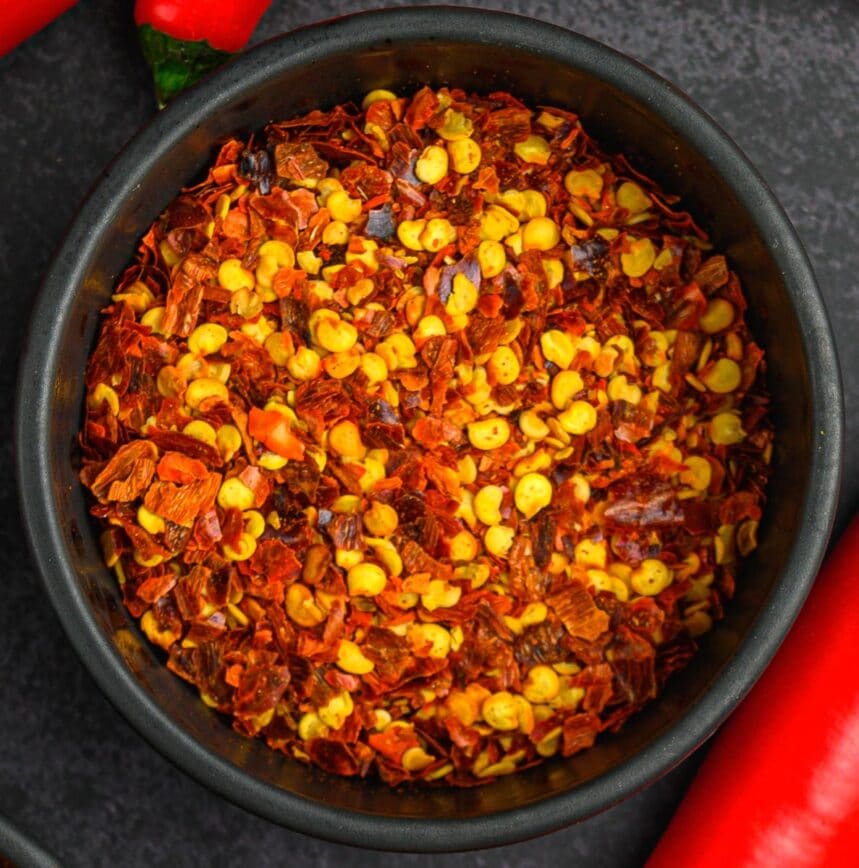
An issue is that different brands can be made from different varieties of peppers, but the most common is cayenne pepper. Monash University lab testing of “chilli flakes” states that 2g or 1 teaspoon is low FODMAP.
Canned Mild Green Chillies
On the Monash University app these are called “Chilli (chili), green, mild, chopped, canned”. They are low FODMAP in 2 Australian tablespoon amounts or 28 g.
Chiles (Chillis): Red, Green & Ground
While we are thrilled that Monash University has lab tested so many chiles, we wish they had been more specific in their nomenclature. Many of their entries say the equivalent of “green chilli” and “red chilli” and, as we have explained above, this does not give us information on what they actually lab tested, choosing from the thousands of varieties available.
For those chiles that do not have specific information, we have done our best to learn what Monash actually lab tested by speaking with Monash directly and also with Amy Laura.
Fresh Red Chile: Serrano & Cayenne
Monash has an app entry called “Chilli, red” and they have told us in private correspondence that they lab tested serrano chiles. The image looks like cayenne peppers. They have indicated that serrano are the most common chiles in their Australian markets. The peppers that they tested are low FODMAP in 28 g servings, which is a chile about 11 cm long. They become Moderate for fructans at 35 g.
FODMAP Friendly has told us in private correspondence that they tested cayenne chiles for the fresh “Red Chilli” listed on their app – and their image does look like cayenne peppers. They state that they are low FODMAP in 28 g amounts, which is “1 medium” chile. The max amount recommended is 44 g.
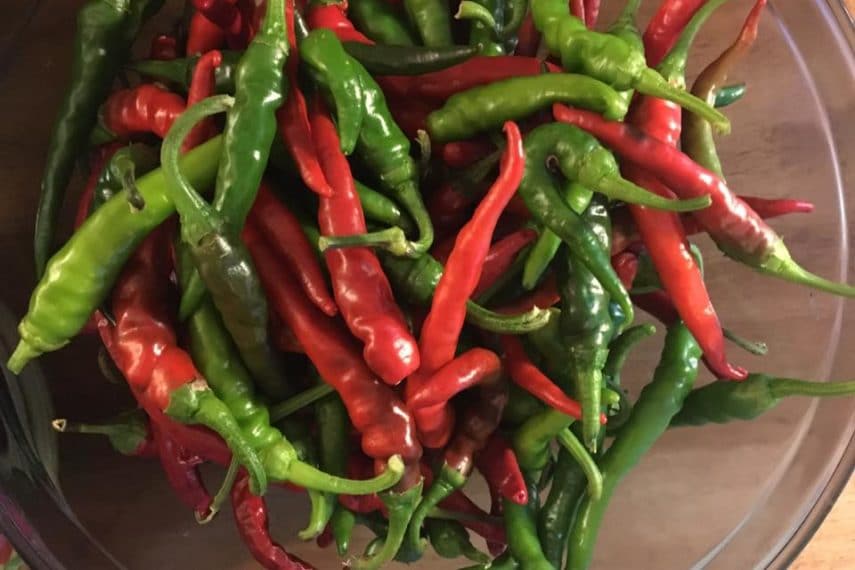
Fresh Green Chillis/Chiles
Fresh green chiles have been lab tested for FODMAPs. On the Monash app there are two entries. The one referred to as “Chilli, green”, and on the FODMAP Friendly app referred to as “Green Chilli”, are believed to be green serrano peppers.
Monash University says a low FODMAP serving size is 28 g, which is an 11 cm long chile. FODMAP Friendly says a low FODMAP serving size is 28 g with a max serving size of 1000 g.
Then Monash also has a listing of “Chile, green, peeled, deseeded” and Amy Laura told these are U.S. southwest chiles – Anaheim, Hatch or Colorado Green. They have a low FODMAP serving size of 61 g and do not become Moderate until 230 g.
Dried Chiles: Whole & Ground/Powdered
There are a few unspecified chiles on the Monash app, whole and ground, that we will attempt to unravel here. There is “Chilli, red, whole, dry” and also “Chilli (chili), red, powdered”.
The “Chilli, red, whole, dry” is low FODMAP at 1 g servings, which they say is 1 chile. The image looks like dried red Thai peppers or perhaps Chile de Arbol, but we have no idea if that is what they lab tested.
For the “Chilli (chili), red, powdered” we have exact information. Amy Laura sent samples of pure chile powder to Monash to be lab tested. The product she sent was made from ripened Anaheim, Colorado Green, Hatch and Chiles Verde Del Norte. It is sometimes referred to as Southwest chile powder or New Mexican chile powder. It is not as mild as sweet paprika; it is earthy, fruity with the slightest bit of heat.
“Chili Powder” Can Mean Many Things
In the U.S., if you see a recipe calling for, or you are shopping for “chili powder”, you are actually referring to a blend, typically made up of some sort of ground chile powder (such as ancho), cumin, garlic and oregano and often including cayenne or other chiles, paprika and/or salt as well.
The ingredients used to create “chili powder” vary hugely from brand to brand. You HAVE to read ingredient lists.
Are FODMAPs Lurking?
Because of the inclusion of garlic in most chili powder blends this can be one of those “hidden” FODMAP occasions where you season your food and don’t even realize that you are using a high FODMAP ingredient.
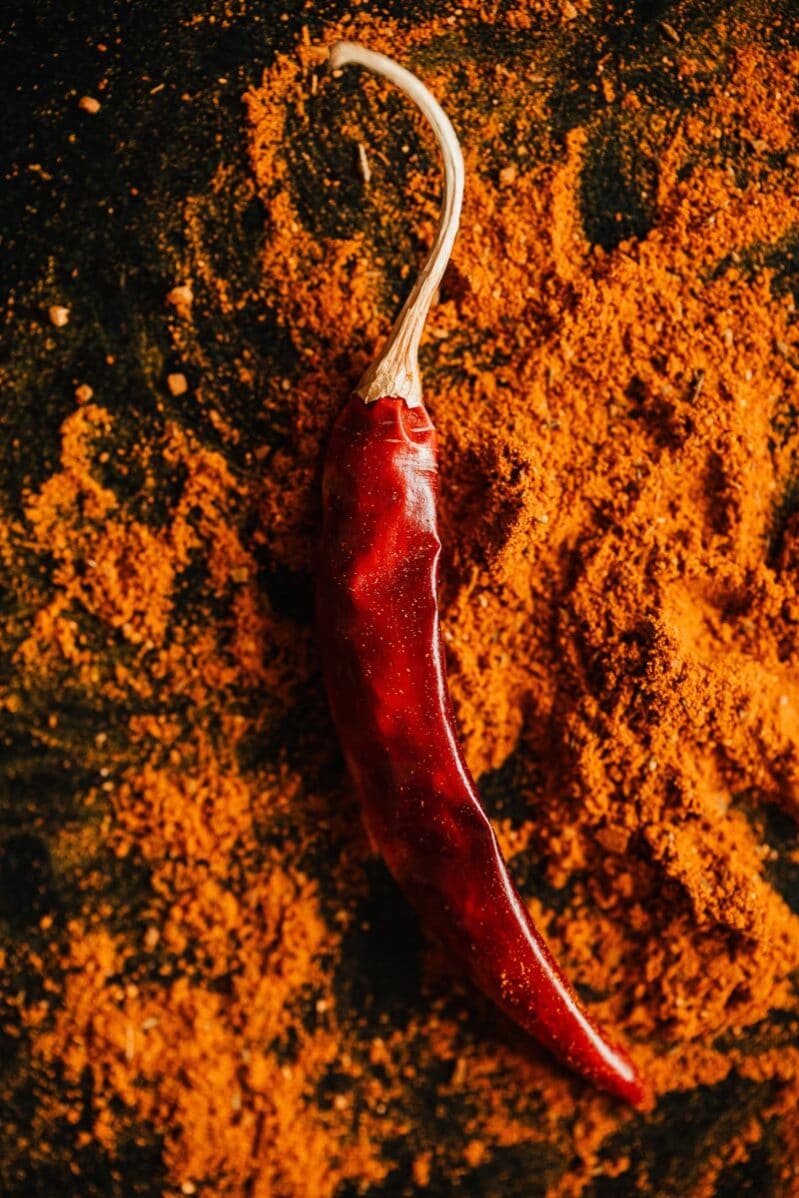
What Chile Did Monash Test?
On the Monash University app there is a listing of “Chilli powder”. It is low FODMAP in 2 g portions, or 1 teaspoon. But what type of chile is it?
The chilli powder that Monash University lab tested is ground red serrano pepper, which we determined via private correspondence.
There are a couple of issues with this. First of all, dried, ground serrano is not easily sourced in all parts of the world (certainly not in the U.S). Secondly, ground serrano pepper is much spicier than chili powders that are blends, and the “Chilli (chili), red, powdered” mentioned above.
This can wreak havoc when following a recipe that calls for 1 tablespoon of chili powder (meaning a blend or a mild chile) and you use an equivalent of straight ground chile pepper!
Unfortunately, when a recipe calls for “chili powder” or “chilli powder” and there is no other accompanying information, you will not know what heat level was used when the recipe was developed.
If you are following a recipe in the U.S. and it says “chili powder”, it is referring to a blend, such as McCormick Chili Powder. As these blends contain garlic (albeit a very small amount), a good substitute would be New Mexican Chili Powder.
If you want to see a fantastic array of whole and ground chiles, check out Penzeys Spices; they have over a dozen to choose from.
What About Dried Ground Cayenne?
Dried, ground cayenne has not been lab tested as a stand-alone ingredient, which is unfortunate as it is a very common spice, especially in the U.S. When we Americans think about ground hot red pepper, we are talking cayenne.
We know that FODMAP Friendly has tested raw, fresh cayenne peppers. We also know that drying produce can alter the FODMAP content. There are Monash Certified Low FODMAP products that contain cayenne, such as Fody Foods Korean BBQ Sauce & Marinade. FODMAP Friendly has certified products that contain cayenne, such as Casa de Santé Organic BBQ Coffee Rub and their traditional BBQ Rub. What this tells us is that at some serving size, dried cayenne is low FODMAP; we just do not know the amount.
Hot Sauce
Hot food lovers crave hot sauce! Luckily we have a few lab tested sauces and there are some that do appear to be low FODMAP according to their ingredient labels.
Monash University has lab tested Red Habanero Sauce and it is low FODMAP at 10 g or 1 teaspoon. They have lab tested Green Habanero Sauce, too, and it is low FODMAP at 8 g or 1 teaspoon.
Tabasco is a very popular commercial hot sauce brand. Tabasco peppers have not been tested, but anecdotally many folks tolerate it. Read our article, Ask The Right Question: Is This Low FODMAP, or Can I Tolerate This?
Black Pepper & Peppercorns
As of September 2022 Monash University has several pepper entries.
- Simple ground black pepper: 1 teaspoon (2 g) low FODMAP serving size
- Tasmanian Pepperberry: 1 teaspoon (2 g) low FODMAP serving size
- Sichuan peppercorns (Chinese prickly ash, red, dry: 1 teaspoon (2 g) low FODMAP serving size
- Sichuan peppercorns (Chinese prickly ash, green, dry: 1 teaspoon (2 g) low FODMAP serving size
How Do You Use Chiles?
Some people complain that the low FODMAP diet is boring or tasteless. We hope that if you take the time to hang out here at FODMAP Everyday® that you will see that it is anything but. We hope this has article helped you understand chiles and chili a little better.
We love cooking with chiles and use them all the time. If you are a chile lover, be sure to check out Amy Laura’s book and these recipes as well:
- Chicken Enchiladas
- Chipotle in Adobo Sauce
- Sweet Chili Sauce
- Sweet n’ Spicy Kettle Corn
- Sweet n’ Spicy Dry Rub
- Spicy Sichuan Noodles & Shrimp
- Smoky Spicy Chicken Wings (see below)
- Honey Roasted Chili Lime Wings…and MANY MORE!
Do YOU like cooking with chiles? Tell us about your favorite low FODMAP dish featuring chiles!
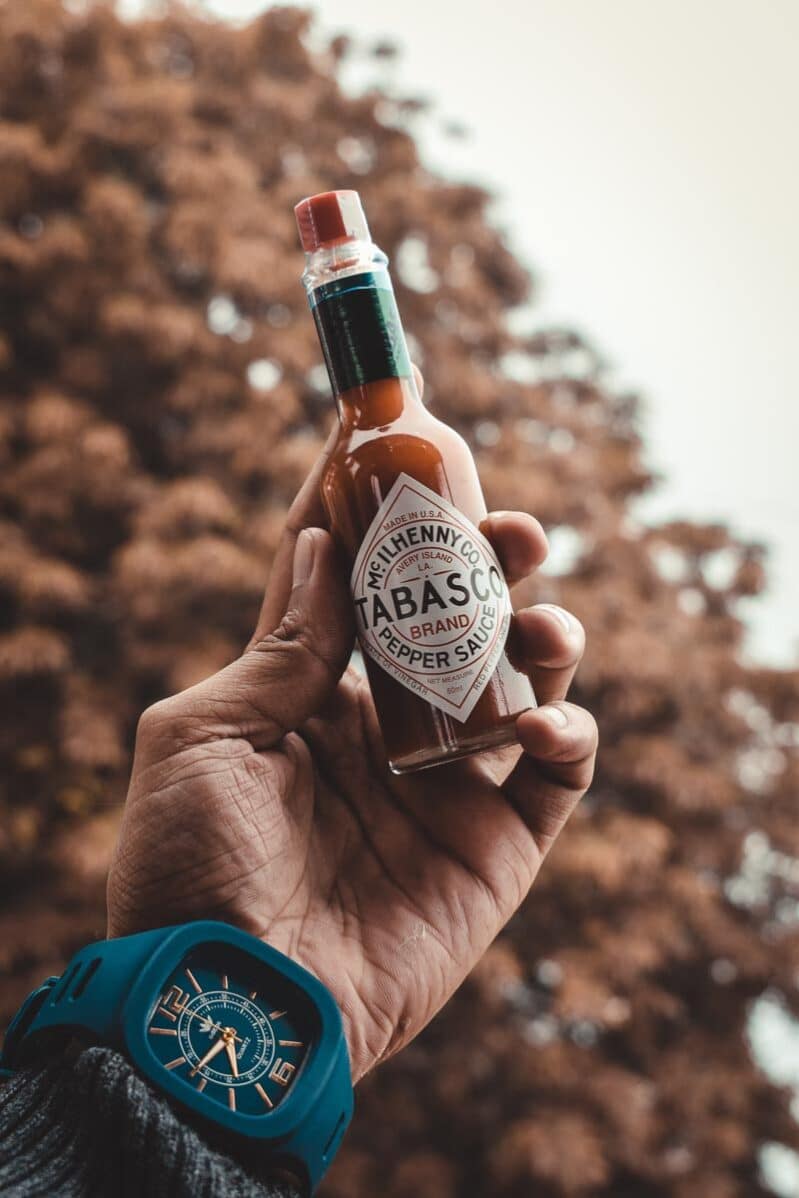









I have a pepper plant, and my friend who gave me the plant says it’s a hatch pepper. I let it ripen so it’s red. I plan on roasting it and using it in a pan of your chicken enchiladas next weekend, instead of the Serranos in the recipe. Will see how it goes!
Sounds delicious. We do not know the FODMAP content of ripe Hatch peppers, so treat it as an unknown, from a digestive perspective.
As of October 15, 2022, the article says:
“Initial lab tests by Monash University stated that they showed no detectable FODMAPs. Subsequent lab tests by Monash showed low FODMAP servings of ½ cup listed as 75 g.”
The Monash FODMAP app currently shows a 75 g serving of red bell pepper as high FODMAP (red light), and the low FODMAP serving size is listed as 43 g. Perhaps your article could be updated to reflect this, as you have already provided equivalent information for orange and yellow bell peppers. Thank you.
Hi there, Thank you. That was a typo. Info was conflated with FODMAP Friendly, which does has a 75 g serving size and a max of 750 g. You might be interested to know that the booklet that Monash still sells to the public and to dietitians shows red bell peppers as containing no FODMAP content. This is because, as we have explained in several places on the site, that the lab tests are Only indicative of what was tested at the time and the peppers you buy today, next month or 6 months from now will be different yet again. Monash knows the variability of produce and it is something that we try to cover in depth.